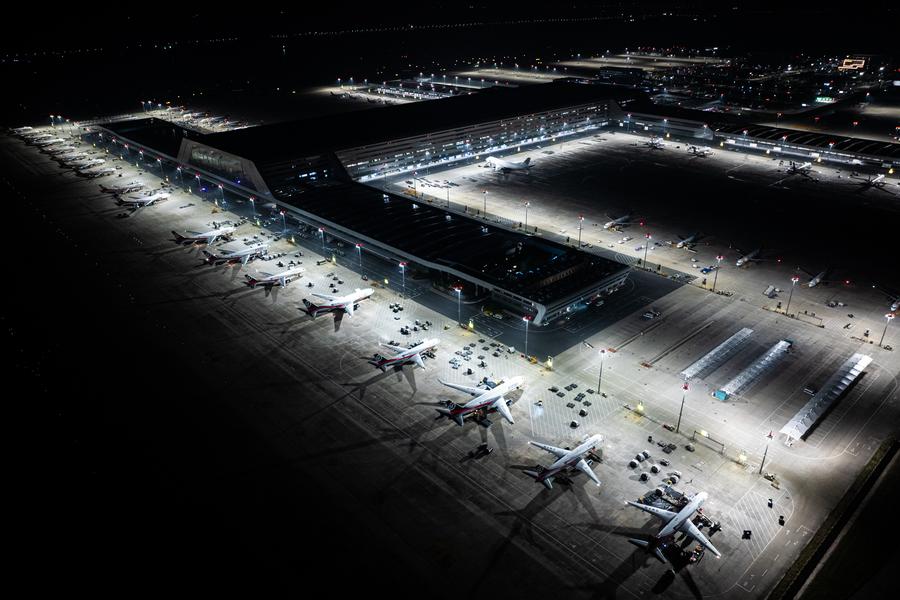
This photo taken on July 11, 2025 shows a view of the apron at Ezhou Huahu International Airport in Ezhou, central China's Hubei Province. (Xinhua/Xiao Yijiu)
WUHAN, Nov. 25 (Xinhua) -- A cargo flight carrying power lithium batteries equipped with a newly developed active safety system took off from an airport in central China on Tuesday, marking a breakthrough in resolving global bottlenecks regarding safe air transport of risky energy products.
The SF Express cargo flight departed from Ezhou Huahu International Airport, China's first cargo-focused airport, which is located in Hubei Province. This maiden flight coincided with the launch of a seminar on power battery air logistics supply chains in Ezhou the same day -- where industry experts and enterprise representatives discussed development bottlenecks and solutions.
As the world's largest power battery producer, China saw the total output of its lithium battery industry exceed 1.2 trillion yuan (about 170 billion U.S. dollars) in 2024. Data also showed that China's lithium battery air transport volume had surged by 21.26 percent year on year to 645,000 tonnes in 2024.
However, the inherent risk of combustion and explosion forced regulators to classify these products as high-risk cargo, thereby limiting logistics efficiency.
To address these challenges, the project was listed as a national key research and development initiative for the 14th Five-Year Plan period (2021-2025), and led by Chongqing Jiaotong University, with participation from battery giant CATL and the China Academy of Civil Aviation Science and Technology.
Wu Jinzhong, project leader and a professor at Chongqing Jiaotong University, said the team tackled three core bottlenecks -- unclear thermal runaway mechanisms, material and structural failures, and the lack of testing technologies. They did this by building a full-chain safety protection system.
The smart protective system utilizes artificial intelligence algorithms to monitor 12 core indicators such as temperature and gas emissions in real time, achieving millisecond-level risk warnings and automatically triggering emergency containment measures to block thermal runaway at the source, thus moving beyond traditional passive safety methods.
The successful pilot flight demonstrated a viable solution for the rapid distribution of power batteries, marking the technology's transition from laboratory to industrial application.
Wu said this technology is set for nationwide promotion to drive standardization of the power battery supply chain. ■








 User Center
User Center My Training Class
My Training Class Feedback
Feedback












Comments
Something to say?
Login or Sign up for free